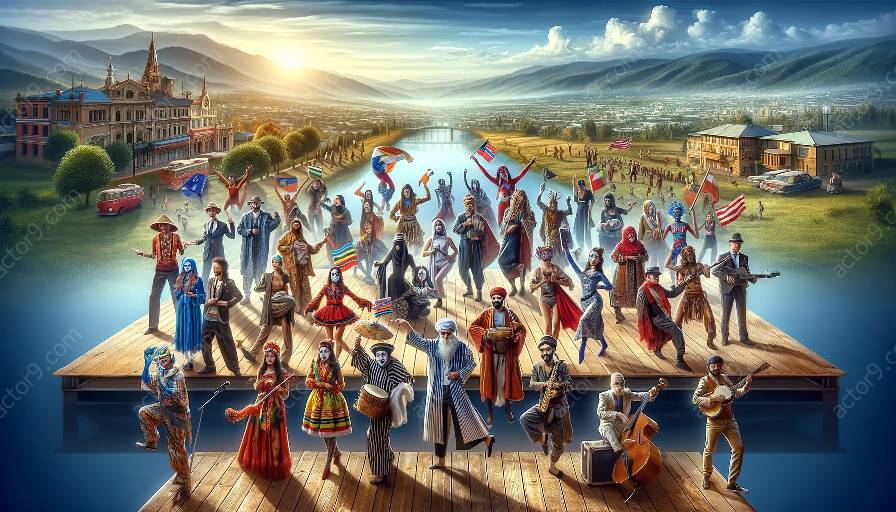Physical comedy and mime have long been recognized as universal forms of entertainment, transcending language barriers and cultural differences. However, the way humor is expressed and interpreted can vary greatly across different cultures, leading to unique and diverse styles of physical comedy. This article will delve into the fascinating world of cross-cultural differences in physical comedy and mime, as well as the incorporation of diversity in these art forms.
Cultural Humor Styles in Physical Comedy
Physical comedy is a comedic style that relies on exaggerated movements, gestures, and facial expressions to elicit laughter. It is often associated with slapstick humor, sight gags, and comic timing. Across various cultures, the interpretation and expression of physical comedy take on distinct characteristics influenced by cultural norms, values, and historical contexts.
For example, in Western cultures, physical comedy often features fast-paced, chaotic sequences with a focus on irony and absurdity. On the other hand, Eastern cultures may emphasize subtlety, precision, and stylized movements in their physical comedy performances. Exploring these cultural humor styles in physical comedy highlights the richness and diversity of comedic expressions around the world.
Cross-Cultural Differences in Physical Comedy and Mime
When considering physical comedy and mime through a cross-cultural lens, it becomes evident that what is humorous in one culture may not necessarily resonate in another. The use of body language, facial expressions, and comedic timing can vary significantly, leading to diverse interpretations of humor.
For instance, while a particular physical gag may be universally amusing, its execution and context can be culturally specific. Understanding and navigating these cross-cultural differences in physical comedy and mime requires sensitivity to cultural nuances and a willingness to adapt comedic performances to resonate with diverse audiences.
Mime and Physical Comedy
Mime, often intertwined with physical comedy, is a form of silent performance art that transcends language barriers. By incorporating mime into physical comedy, performers can communicate humorous narratives using expressive body movements and nonverbal communication. Mime and physical comedy together create a powerful blend of entertainment that appeals to audiences worldwide.
When examining the influence of mime and physical comedy on different cultures, it becomes apparent that the comedic styles and themes portrayed through these art forms reflect cultural values, traditions, and societal norms. While some cultures may favor wordplay and satire, others may gravitate towards visual and physical humor.
The Incorporation of Diversity
Incorporating diversity in physical comedy involves embracing and celebrating the myriad ways in which humor is expressed across cultures. By acknowledging and integrating cultural humor styles, physical comedians can enrich their performances and connect with diverse audiences on a deeper level. This inclusive approach fosters a greater appreciation for the diversity of comedic expressions and promotes cross-cultural understanding through laughter.
Ultimately, exploring cultural humor styles in physical comedy, understanding cross-cultural differences, and examining the impact of mime and physical comedy on diverse cultures enhances our appreciation for the universal appeal of laughter and the importance of diversity in entertainment.


























